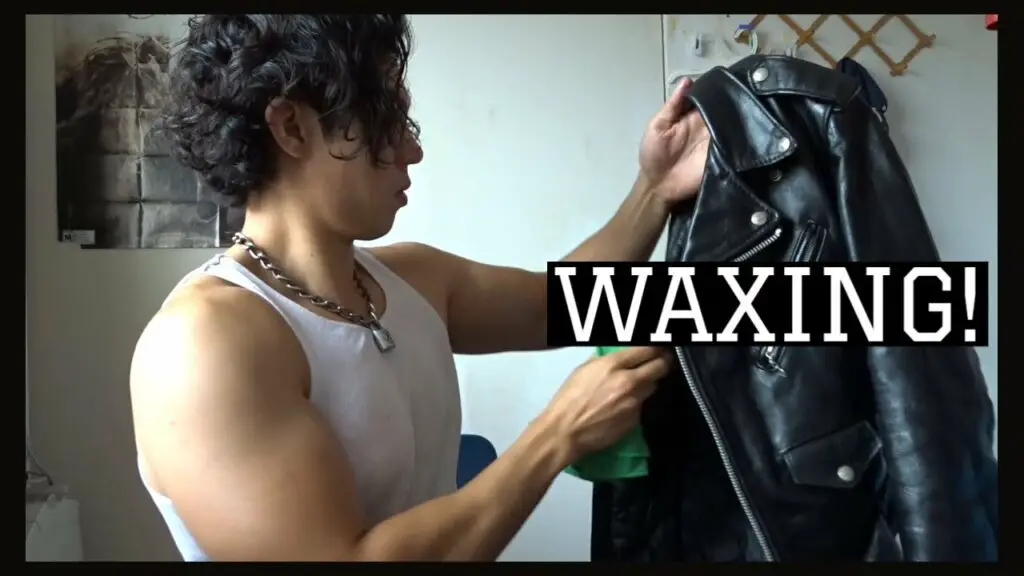Leather jackets are always a hit when it comes to style and comfort. It’s a trendy wear for all seasons. Yet, some of you might be having second thoughts over wearing it on a rainy day.
Is a leather jacket ideal wear for the rainy season? It is if it’s waterproofed.
Yes! A leather jacket needs to be waterproofed if you want to wear it in a humid climate. Let’s now find out the reasons and ways for waterproofing a leather jacket.

Why Should You Waterproof a Leather Jacket?
Leather is a natural fabric. So, it’s permeable, which means it has a highly porous surface. Leather will absorb a good amount of moisture if exposed to a moist climate for prolonged hours.
Mold and mildew; yes, fungi will make home your moist jacket! Prolonged exposure to water can get your jacket cracks, creases, and spots.
Moreover, leather loses its essential natural oils upon hours of contact with water. This makes your jacket dry, stiff or even rot. Leather jackets if not waterproofed have a life too short. So, if you haven’t waterproofed your jacket yet, it’s high time!
Do You Know?
Before letting you know different waterproofing methods, let me tell you some leathery facts. Full Grain and Top Grain leather is the most durable and water-resistant leather.
Its maintenance has more options. Leather variants like Nubuck and Suede are more porous; highly sensitive to water. Hence, they are not so suitable on a rainy day.
Faux or artificial leather beats natural leather in its water resistance. It has low permeability due to its synthetic counterparts. But it nowhere meets natural leather when it comes to look, quality and feel.
How to Waterproof a Leather Jacket?
There are easy DIY methods to waterproof your leather jacket. Let’s check it out!
1.) Apply Water-resistant Leather Lotion
Water-resistant leather lotions are carefully configured to protect the leather from moisture. When applied to the jacket, it creates a barrier of protection between the surface of the leather and the atmosphere it’s in contact with.
2.) Try Waxing

Wipe your jacket clean and dry with a dry cloth. Apply wax to a clean cloth and dab it evenly on the surface of your jacket. Let the jacket dry naturally at room temperature. When it gets dried, wipe off the excess wax with a clean cloth.
3.) Condition Your Jacket Regularly
Regular conditioning improves your jacket’s water resistance and lifespan. It will protect the jacket from any elemental damages and help retain its look.
Before conditioning your jacket, make sure it’s damp for better absorption of the conditioner. Be sure that your jacket is clean before conditioning.
Apply a small amount of conditioner to a clean cloth and spread it evenly on the jacket. Don’t miss to apply it on creases and folds.
After application, give ample time for the leather to absorb the conditioner. Once dried, wipe off excess conditioner and let it dry at room temperature.
Conditioning can’t be done to Nubuck or Suede. You need to use a water-repellent spray to protect such highly sensitive fabrics.
4.) Apply a Silicone Spray
Wipe out any dust, dirt, or debris on your jacket with a clean cloth. Spray an even layer of silicone. Once dry, silicone forms a waterproof barrier that repels water.
Oil-based silicone spray is ideal as it’s more effective in waterproofing. Any water-based silicone spray will be suitable for Nubuck and Suede.
5.) Try out Acrylic Polymer Sprays
Acrylic polymer sprays create a net-like barrier that is water-resistant yet porous enough to let your jacket breathe. The spray suits all kinds of leather and doesn’t discolor the leather. Unlike silicon sprays, acrylic polymer sprays won’t get your jacket slippery.
6.) Go Natural
If you want to go natural, beeswax is a good option. Beeswax mixed with cocoa butter and olive oil gives you thick balm which you can apply on your jacket as a water-repellent layer. Olive oil is a good natural conditioner on leather.
See also: Boot Waterproofing: The Definitive Guide
A Few Tips for Waterproofing
1. Never forget to clean your jacket before the process. Clean your jacket with a damp cloth and let it dry before waterproofing.
2. Hang your jacket upright on a sturdy hanger so that you can waterproof it evenly on all areas.
3. Always test your waterproofing product on an inconspicuous spot of your jacket before applying it all over.
4. If you are using a waterproof spray, spray it on your jacket from one foot away to evenly spray it and prevent chances of you inhaling the spray.
5. Carry out the process in a well-ventilated space.
6. Allow your jacket to dry properly at room temperature after the process.
7. Never dry your jacket exposing it to direct excessive heat; it will damage the fabric.
How to Increase the Lifespan of Your Leather Jacket?
1. Carry an umbrella on a rainy day even if you are wearing a waterproofed leather jacket.
2. If wet, hand-dry your jacket dry immediately after you get back home with a dry clean cloth, and let it dry at room temperature.
3. Clean your jacket regularly. Mold and mildew will thrive well on dirty leather in a humid climate. Regular cleaning will help your jacket live long.
4. Never dry your jacket with a cloth dryer. It’s too hot and harsh on leather.
5. Never leave your leather jacket in your basement or attic which will be humid due to lack of air conditioning.
6. Don’t store your jacket in a sealed plastic bag. You are mistaken if you think sealed bags ward off humidity. Such bags won’t allow moisture to escape from your jacket. Pierce a hole in the bag to let your jacket breathe if you want to store it in a sealed garment bag.
7. Keep your leather jacket safe in a dry wardrobe or cloakroom. Hang it upright on a large sturdy coat hanger to avoid creases and fold marks.
A leather jacket is a classic style statement. It never goes out of fashion and you can pair it with any kind of clothing to your fashion sense. So, a high quality leather jacket is worth the pay. If cared carefully, it’s an evergreen apparel to your wardrobe.







